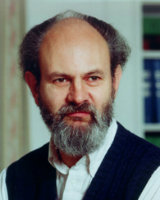
I have worked at Columbia since 1971, with a couple of years on leave in Washington working on nuclear arms control (in the U.S. Department of State), and four sabbaticals taken in New Zealand, in California (at the Lawrence Livermore National Laboratory), in New Mexico (Los Alamos National Laboratory), and as a Phi Beta Kappa lecturer (on eleven different U.S. campuses). Since the mid-1980s my work has focused on the use of seismological methods to study nuclear weapon test explosions and their implications in both the scientific and political worlds. There have been about 2,000 such explosions (about one a week from 1950 to 1990, plus a few prior to 1950 and since 1990). How they are detected, and identified, and located, and how big they are, are often subjects of intense debate in technical and scientific forums. These issues are critical in evaluating present or prospective arms-control treaties.
At the Comprehensive Nuclear-Test-Ban Treaty negotiations in Geneva in 1994, I presented an "expert's paper" for the United States, on monitoring issues associated with this treaty. Starting in summer 2000 I worked on a National Academy of Sciences panel that in July 31 2002 issued a detailed report on "Technical Issues Related to the Comprehensive Nuclear Test-Ban Treaty" (it is available online at http://www.nap.edu). In the March 2009 issue of Scientific American, Won-Young Kim and I have an article ("Monitoring for Nuclear Explosions") concluding that: "Detection of a test of a nuclear weapon has become so effective and reliable that no nation could expect to get away with secretly exploding a device having military significance."
W3018: Weapons of Mass Destruction